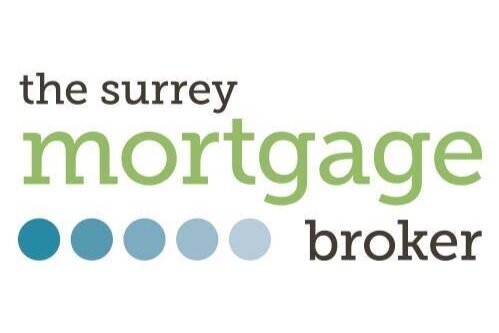It’s proving your financial stability that can take the extra time and effort
The mortgage market has come a long way in recent years and self-employed borrowers now have more choices available to them. However, getting a self-employed mortgage can still be tricky, as lenders often require proof of income and business finances.
There’s actually no such thing as a ‘self-employed mortgage’ – mortgage products are the same whether you are employed or self-employed, but lenders consider self-employed applicants to be higher risk and consequently subject them to more scrutiny than employed mortgage applicants.
Approval success
As with any mortgage applicant, the higher your deposit, the more borrowing options are likely to be available to you – and often at more competitive rates. When applying for a mortgage on a self-employed income, being able to put a bigger deposit down can be even more advantageous in increasing your odds of approval success.
As of July 2022, there were around 4.29 million self-employed workers in the United Kingdom. During this provided time-period, self-employment in the UK has grown steadily, from a low of just 3.2 million in December 2000 to a peak of over five million at the start of 2020[1].
Financial stability
It isn’t necessarily harder to obtain a mortgage if you are self-employed, but it tends to require more paperwork and screening to have your application approved. Depending on the lender, the lending criteria may differ slightly, although most now offer the same deals to eligible applicants regardless of whether they are employed or self-employed. Overall it’s the additional work in proving your financial stability that can take the extra time and effort.
Ultimately, all lending applications are underwritten to ensure that the applicant can afford to repay the debt. When you are self-employed, your income tends to fluctuate, and no one specific person can satisfactorily confirm your salary details. Consequently, lenders need to collate more information to determine that you are eligible for the loan you require.
Did you know?
When applying for a mortgage, you are classed as self-employed if you
are a sole trader
are a partner of a business on a self-employed basis
earn your primary income from owning a 20% or more stake in a limited company
are a partner in a limited liability partnership
One of the biggest challenges
Most lenders need to verify an applicant’s self-employed financials over the previous two or three years. This can be one of the biggest challenges facing self-employed people, with some having no choice but to wait it out until they have sufficient evidence to back their applications up.
To prove your self-employed income you will typically need to provide two or more years of accounts that clearly detail your income, as well as your business’s expenses and overheads. These accounts will preferably have been prepared by a chartered accountant. In addition to these accounts, lenders may request a copy of your Tax Calculation (used to be called SA302) form, and an HM Revenue & Customs (HMRC) tax year overview for the past two or more years. The Tax Calculation shows what you earned and the tax due and the Tax Year Overview confirms how much tax you have paid. The Tax due on the calculation needs to match the tax paid on the Overview.
Current earnings
The SA302 form is issued to individuals who derive income outside of the PAYE system to assist them in proving their income and any tax deductions. A lender will use these documents to verify your previous and current earnings, but they will also want to see some proof of future earning prospects. Depending on your business setup, lenders may request copies of current and upcoming contracts, expected commissions, etc.
When preparing your proof of self-employed earnings, you need to consider how lenders will perceive them. For example, if you have experienced some falls in income it’s vital that you can satisfactorily explain the reason for these fluctuations to minimise the lender’s doubt in your financial stability. Include any relevant proof to back up your explanations.
Taxable income
It’s quite possible that in the past, you and your accountant have used whatever legal methods available to reduce your taxable income. However, now that you want to apply for a loan, you need your income to be the largest figure possible.
If you are a director of a limited company, you may choose to retain some profits within the business, rather than withdraw them as dividends or salary. Some lenders will include a business’s retained profits when considering your application. However, not all do, so it would be prudent to find one that does before you begin your application process.
Financial circumstances
As a sole trader, the amount you will be eligible to borrow will be calculated by taking an average of your verified profits as stated on your self-assessment tax returns. If you are a limited company director, the calculation may be based on either salary plus your share of net profit, or your salary plus any dividends.
But, again, each lender’s process can differ, with some using the latest year’s figures and others using a two or three-year average. That is why it is vital to take the time to find the lender whose process best suits your financial circumstances.
Mortgage application
Lenders typically take an applicant’s general spending habits into consideration, too, and they will likely request copies of your bank statements. Most lenders will scrutinise all spending, including household bills, childcare and leisure outgoings to ensure that you will be able to afford the repayments.
As with any mortgage application, lenders will also need to conduct credit checks to ensure that you are a reliable borrower. Therefore, it’s prudent to get a copy of your credit score before lodging an application to see if there is anything that needs addressing first.
Looking for a mortgage lender that best suits your circumstances?
If you are self-employed we can assist in matching you with a lender that best suits your circumstances. We’ll advise on what you are likely to be eligible for and assist you with the application preparation. To find out more and discuss your options, contact The Surrey Mortgage Broker – telephone 01252 759233 – email richard@thesurreymortgagebroker.co.uk
Source data:
[1] https://www.statista.com/statistics/318234/united-kingdom-self-employed/#:~:text=As%20of%20July%202022%2C%20there,at%20the%20start%20of%202020





